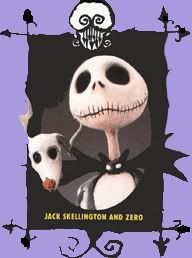The original Goths were an Eastern Germanic tribe who played an important role in the fall of the western Roman Empire. In some circles, the name "goth" later became pejorative: synonymous with "barbarian" and the uncultured due to the then-contemporary view of the fall of Rome and depictions of the pagan Gothic tribes during and after the process of Christianization of Europe. During the Renaissance period in Europe, medieval architecture was retroactively labeled gothic architecture, and was considered unfashionable in contrast to the then-modern lines of classical architecture.
In the United Kingdom, by the late 1700s, however, nostalgia for the medieval period led people to become fascinated with medieval gothic ruins. This fascination was often combined with an interest in medieval romances, Roman Catholic religion and the supernatural. Enthusiasts for gothic revival architecture in the United Kingdom were led by Horace Walpole, and were sometimes nicknamed "goths", the first positive use of the term in the modern period.
The gothic novel of the late eighteenth century, a genre founded by Horace Walpole with the 1764 publication of The Castle of Otranto, was accountable for the more modern connotations of the term gothic. He originally claimed that the book was a real medieval romance he had discovered and republished. Thus was born the gothic novel's association with fake documentation to increase its effect. Henceforth, the term was associated with a mood of horror, morbidity, darkness and the supernatural as well as camp and self-parody. The gothic novel established much of the iconography of later horror literature and cinema, such as graveyards, ruined castles or churches, ghosts, vampires, nightmares, cursed families, being buried alive and melodramatic plots. An additional notable element was the brooding figure of the gothic villain, which developed into the Byronic hero. The most famous gothic villain is the vampire, Dracula, originally depicted in a novel by Bram Stoker, then made more famous through the medium of horror movies.
The powerful imagery of horror movies began in German expressionist cinema in the twenties then passed onto the Universal Studios films of the thirties, then to camp horror B films such as Plan 9 From Outer Space and then to Hammer Horror films. By the 1960s, TV series, such as The Addams Family and The Munsters, used these stereotypes for camp comedy.
Certain elements in the dark, atmospheric music and dress of the post punk scene were clearly gothic in this sense. The use of gothic as an adjective in describing this music and its followers led to the term goth.
In the United Kingdom, by the late 1700s, however, nostalgia for the medieval period led people to become fascinated with medieval gothic ruins. This fascination was often combined with an interest in medieval romances, Roman Catholic religion and the supernatural. Enthusiasts for gothic revival architecture in the United Kingdom were led by Horace Walpole, and were sometimes nicknamed "goths", the first positive use of the term in the modern period.
The gothic novel of the late eighteenth century, a genre founded by Horace Walpole with the 1764 publication of The Castle of Otranto, was accountable for the more modern connotations of the term gothic. He originally claimed that the book was a real medieval romance he had discovered and republished. Thus was born the gothic novel's association with fake documentation to increase its effect. Henceforth, the term was associated with a mood of horror, morbidity, darkness and the supernatural as well as camp and self-parody. The gothic novel established much of the iconography of later horror literature and cinema, such as graveyards, ruined castles or churches, ghosts, vampires, nightmares, cursed families, being buried alive and melodramatic plots. An additional notable element was the brooding figure of the gothic villain, which developed into the Byronic hero. The most famous gothic villain is the vampire, Dracula, originally depicted in a novel by Bram Stoker, then made more famous through the medium of horror movies.
The powerful imagery of horror movies began in German expressionist cinema in the twenties then passed onto the Universal Studios films of the thirties, then to camp horror B films such as Plan 9 From Outer Space and then to Hammer Horror films. By the 1960s, TV series, such as The Addams Family and The Munsters, used these stereotypes for camp comedy.
Certain elements in the dark, atmospheric music and dress of the post punk scene were clearly gothic in this sense. The use of gothic as an adjective in describing this music and its followers led to the term goth.


No comments:
Post a Comment